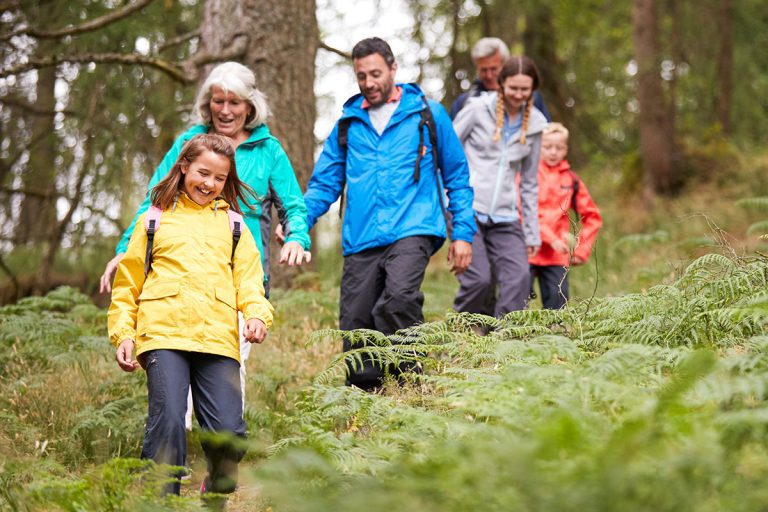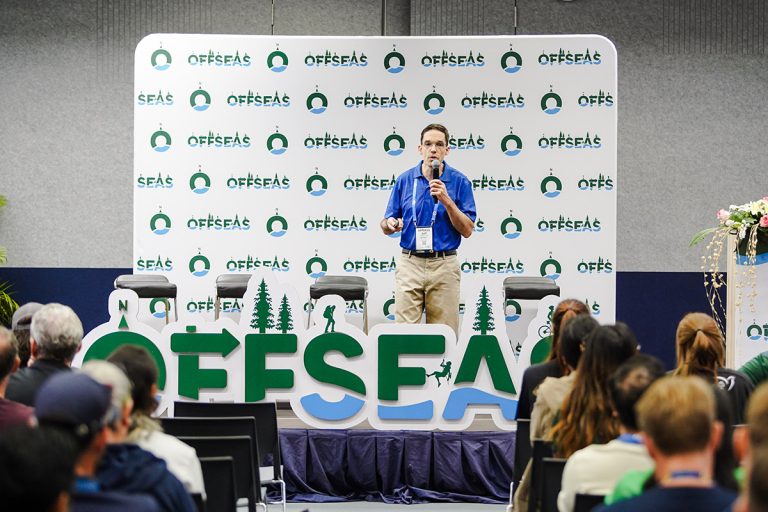Introduction
It was late in the afternoon on a beautiful spring day at the high ropes challenge course. The final camper to head down the zipline was unclipped from the tether holding her to the launch platform. Group members gave encouraging cheers. She accelerated down the cable, gaining speed as she got closer to the lowest point of the element. Once she came to a stop there, some three meters above the ground, a massive wooden ladder would be wheeled into place for her to descend.
As the 11 year old girl sped down towards the bottom, encouraging cheers turned to horrified screams. “The LADDER!!” The girl slammed into the heavy ladder structure, which somehow had not been moved out of the way. She hung limp and unmoving, folded almost in half, her tiny hands dangling below her feet. The ladder, smashed and lying on its side, lay below her.
The camper was eventually rescued from the zipline and transported by ambulance to the hospital, where she was diagnosed with bruises and released. She returned to her group that evening. Questions turned to: how could this have happened? How can we prevent it from occurring again?
Formal incident reviews are conducted following occurrences resulting in significant loss. Examples of significant loss include fatality, permanently disabling injury, serious illness, and major property damage. The purpose of the incident review is twofold: 1) understand what led to the event, and 2) provide recommendations that can help prevent similar incidents from occurring in the future.
Incident reviews are different from risk management reviews. Incident reviews are carried out in response to a major incident and focus on issues related to that incident. Risk management reviews are carried out proactively and on a periodic basis, with an aim to prevent incidents—especially major ones—from occurring in the first place.
Specific procedures for when and how an incident review should be performed, and by whom, can be developed by each outdoor program. One approach is as follows:
1. Minor incidents. An incident report is generated. The incident reporting process (see Chapter 13) is carried out. No separate incident review is made. Possible examples: many near misses; small, superficial, uncomplicated lacerations; superficial frostbite; property damage of US $50.
2. Medium-impact incidents. In addition to incident reporting, an internal incident review is held. Possible example: four-meter fall while rock climbing leading to brief loss of consciousness and emergency transport to hospital, where patient is assessed with mild traumatic brain injury and released.
3. Major incidents. In addition to incident reporting, an internal incident review is conducted, and an external review is completed as well. Example: fatality.
Other considerations in deciding whether or not to initiate an incident review might include the potential consequences to persons, property, the organization, or other entities if a similar accident were to re-occur, and the assessed probability of re-occurrence.
Any incident review system should be recorded in an organization’s risk management plan documentation.
Internal Reviews
Internal reviews are generally conducted by senior program staff within the organization. Members of the organization’s Risk Management Committee might also be part of the review team, providing a useful perspective. A team of up to three or four persons often suffices.
Each review team member should be suitably qualified. Review team members as a group should have an understanding of the standards for proper conduct of the outdoor activity in question. They should understand how to conduct incident investigations thoroughly, effectively, and impartially. They should have an understanding of legal and other implications of incidents. And they should have the ability to obtain, process and synthesize complex data streams in a relatively short period of time.
Internal reviews often take place over a period of days or weeks, depending on the nature of the incident, availability of review team members, and the requirements of the review.
At the conclusion of the review, a written report is provided to senior leadership and/or the organization’s Risk Management Committee, as determined by the organization’s incident review process.
External Reviews
External incident reviews are led by a team of independent outside experts, generally with extensive specialist knowledge in the outdoor activity that is the subject of investigation, and with experience conducting incident reviews. In additional to providing expert knowledge of the activity, external reviewers can provide fresh perspectives uncolored by potential conflicts of interest or cognitive biases and logic traps such as confirmation bias.
External reviews are often conducted along with internal reviews, to provide multiple perspectives following very serious incidents. They can take several months from start to finish, and may require a significant budget.
The external review team, as with the internal review group, should have an understanding of relevant standards, a knowledge of how to conduct reviews, and the capacities needed to identify, access, and interpret the information needed to create a comprehensive set of findings and insightful recommendations. In some circumstances, nationally or globally recognized leaders in the relevant outdoor activity (such as whitewater canoeing or mountaineering) may be retained to be part of the team for part or the entirety of the review process. Team members optimally are senior, mature individuals with decades of industry experience and a background in incident response and review.
It is useful for organizations to consider beforehand who they might call upon to assist with an external review. Having a roster of individuals who have agreed to serve on a review team if they are called upon and available can be helpful in a crisis. Larger outdoor organizations and industry groups may be useful in assisting you in assembling prospective team members in advance.
External reviews may follow a similar process to that employed in internal reviews. In some cases, external reviews may be more probing and extensive than their internal counterparts.
It can be useful to consult with the organization’s insurance providers and legal counsel before, during and after the review.
At the conclusion of the external review, a report with findings and recommendations is made to the organization’s executive leadership, Board of Directors, or others as appropriate.
Other Reviews
In addition to internal and external reviews commissioned by and controlled by the outdoor organization, other reviews may occur, particularly with serious incidents such as fatalities. Insurance companies, coroners or medical examiners, law enforcement agencies or other authorities may conduct reviews.
The contents of these reviews may be useful to the organization as it conducts its own reviews and determines a course of action following completion of all reviews.
The Review Process
Gather and Analyze Information
Determining the facts of the situation is the first part of the review process. All relevant aspects of the organization and the incident should be looked into.
Subjects of investigation may include:
1. Activity Location. Assess hazards, risks, environmental conditions, available rescue resources. How well does the nature of the incident site match the location-related risk assessment and related procedures in the organization’s risk management documents and systems? Review weather reports. Reviewers may travel to the site, by fixed-wing aircraft or helicopter for some remote sites.
2. Activities. Were activities conducted to standards? Were they appropriately matched to the participants, staff, location, and environmental conditions?
3. Documents and Systems. Review informed consent documentation, participant gear lists, written or other pre-event communications to participants, program gear inventories, emergency plans, policies and procedures, risk assessments, training syllabi, evidence of training of staff, safety briefings, permits and other authorizations, SOAP notes, incident reports and narratives, police reports, medical examiner or coroner’s reports, previous incident reports, previous incident reviews or safety reviews, maps, photographs, and written approvals for activities and use of activity areas.
4. Staff. Evidence of appropriate training, certification, knowledge, skills, attitudes, experience, and judgment.
5. Participants. Pre-event information and preparation. Informed consent. On-program training and briefings.
6. Equipment. Availability of needed equipment. Condition, quantities, location of equipment. Was equipment used, and used appropriately? Were persons suitably trained in equipment use and management?
7. Contractors. Qualifications, vetting, and performance during activities.
8. Culture. Culture among field staff, participants, contractors, program administrators. Attitudes towards taking risks. Pressure to meet financial over safety objectives.
9. Other parties. Information from bystanders, witnesses, survivors. Accounts from responders and emergency dispatchers. Information from program administrators, risk managers, land managers, involved officials.
10. External resources. Information from reliable, qualified specialist consultants. (For instance, an organization might assess if the National Lightning Safety Institute, based in the US, would provide suitable expertise for an electrical storm incident.) Gear manufacturers. Consensus standards set by established standards-setting bodies.
In the case of the zip line accident, written incident narratives and medical reports from staff on site, communication with the patient’s family, and information from the hospital were assessed. The challenge course operations manual and staff training plans were reviewed. The organization’s insurance agent and legal counsel provided guidance.
Synthesize Information and Develop Conclusions
In this step information previously assembled is reviewed to identify immediate (proximate) and underlying, or root, causes. A systems approach to information analysis, and an investigation of cultural elements underlying behavior, can both be helpful to uncover root causes.
One root cause analysis approach begins by asking why an incident occurred. It is then asked why that proximate cause occurred. The next question is why that underlying cause leading to the proximate caused occurred. This continues for five or so iterations. This method of inquiry can help clarify underlying causes and therefore more effective responses.
Let’s consider an incident where an activity leader did not use proper technique or provide adequate supervision, leading to an injury or other incident. Why did this occur?
An initial analysis uncovers that the activity leader’s training was minimal, and that the leader had very little experience, both of which led to providing inadequate supervision. In addition, the organizational culture seemed supportive of not closely following industry standards, equipment manufacturer recommendations (which were not even known by the activity leader), or the organization’s own guidelines. Why was this?
There was significant turnover in the organization’s administrative positions, and the current program mangers had little background in risk management. Financial pressures led to low pay for activity leaders, and resulted in high turnover in employee positions throughout the organization. The Risk Management Committee had few members and rarely met; it was generally ineffective in assessing corporate culture or advocating for strong risk management systems. Administrative leadership was focused on marketing, sales, and keeping things fun and free of burdensome paperwork and procedures for field staff in order to keep up morale and field staff retention.
When we put the pieces together, a deeper understanding appears. It now becomes clearer that simply reprimanding the activity leader for not following the rules in insufficient. Grappling with financial, cultural, and systems issues is necessary to fully address the underlying causes of the incident.
Conclusions from analysis of the zip line incident included that staff were inadequately trained, volunteer chaperones where inappropriately tasked with moving the ladder, and the ladder structure was excessively heavy and bulky.
Make Recommendations for Action
In the next step, recommendations are made to address the conclusions about the range of causes of the incident. Actions that effectively address the underlying causes are most helpful in preventing a reoccurrence of the incident over the long term.
Recommendations are generally provided in a written report, which summarizes the entirety of the review:
1. Description of the incident
2. Relevant facts uncovered in the investigation
3. Positive elements of the organization’s risk management systems and incident response
4. Immediate and root causes of the incident
5. Recommendations
Recommendations are addressed to the organization that experienced the incident. Since the organization exists in a larger context, however, recommendations for the outdoor industry as a whole or relevant industry associations and regulatory bodies may be offered if relevant to the situation.
Recommendations for improving zip line and challenge course safety included making certain improvements to staff training, reducing staff turnover, better documenting roles and responsibilities of adult leaders on site, lowering the zipline to enable a smaller, lighter ladder to be used, and adding a formalized “all clear” communications system for the zip line.
Organization Response
The outdoor program then responds to the review findings. This is often in a written format and within a reasonably prompt timeframe following receipt of the report.
The organization’s response may address each recommendation separately. The response can indicate if the organization agrees with the recommendation, agrees only in part, or disagrees. Broad approaches to implementing recommendations can be outlined.
For internal reviews of less serious or complex incidents, a written response to each of the report’s findings may not be made.
The organization then should develop and implement strategies and tactics to act on the recommendations. This may include changes to policies and procedures; improvements to staff training; revision of qualification requirements of activity leaders; adjustments to gear, activities, or approved activity sites; shifts of organizational culture, or any number of other changes.
As a final step, the organization reviews the effectiveness of its actions in addressing the report recommendations, and makes adjustments as necessary. This occurs on an ongoing basis for as long a time as needed.
Sharing What’s Learned with Others.
Openly sharing the results of the report with activity leaders and others throughout the organization has numerous benefits. It can help those psychologically or otherwise affected by the incident to process their experience. It can build buy-in for the changes that follow. And it can enhance the integration of new systems, procedures and perspectives needed to put in place the recommended changes.
Sharing report findings with family members of those affected and past, current and potential future customers can also have benefits. When done well, this can show the organization’s commitment to quality risk management of activities it offers. It can build goodwill and has the potential to reduce the probability of damaging legal action against the organization.
Providing information about the incident and from the report to others in the outdoor industry can help them learn from your experience. Redacted report summaries and case study presentations, when sensitively and thoughtfully presented, can elevate the outdoor field as whole without offending those affected by the incident.
When sharing report findings with others, care should be taken to respect the confidentiality of those involved, for example by not including names of individuals who were part of the incident. In addition, consideration should be given to liability implications of disclosing errors or negligence committed by the organization. Qualified legal counsel can provide guidance relevant to your situation and jurisdiction.
Note: this information adapted from the book Risk Management for Outdoor Programs: A Guide to Safety in Outdoor Education, Recreation and Adventure.



